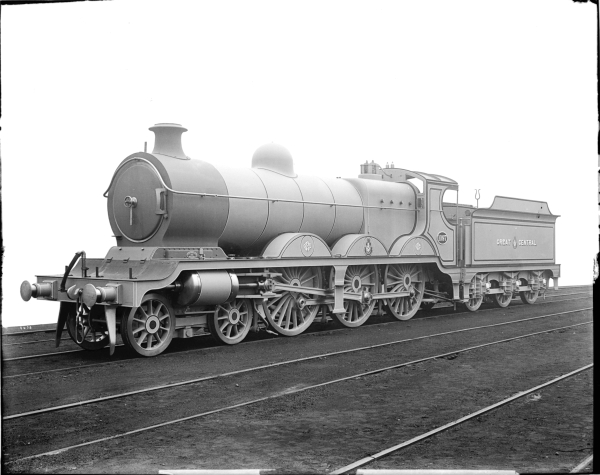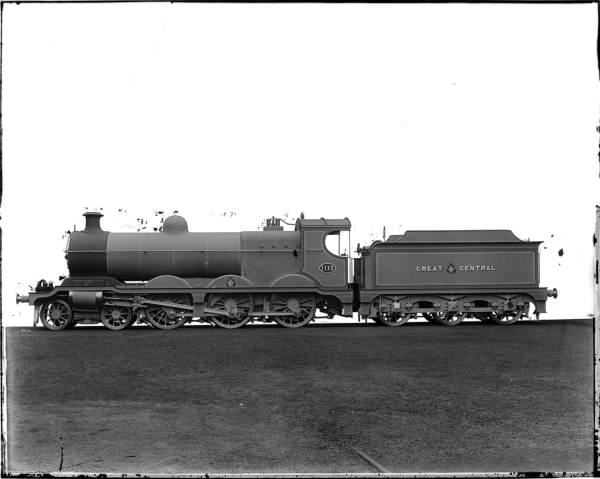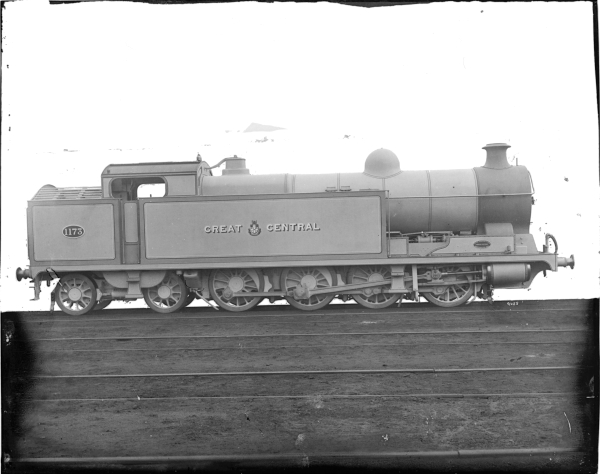To improve the fledgling passenger services on the Great Central Railway, Sir Sam Fay requested that new fast passenger locomotives be built, and the result was the two John G. Robinson designed Class 8C 4-6-0's. A more powerful version, known as the 8F, was later designed by Robinson and built by Beyer Peacock & Co. of Manchester in 1906. The photograph below is the official Beyer Peacock works photograph of class member, No. 1067.
Great Central Railway Class 8F, 4-6-0, No. 1067 See Details
During Sir Sam Fay's expansion of the services offered by the Great Central Railway, one of the areas he concentrated on was the carrying of freight. To improve the services, Fay requested that new freight locomotives be built, and the result was the John G. Robinson designed Class 8 4-6-0's of 1902. A smaller wheeled version, known as the 8G, was designed by Robinson and built by Beyer Peacock & Co. of Manchester in 1906. This image is the official Beyer Peacock works photograph of No. 1113 - the locomotive being painted in grey for the purpose.
Great Central Railway Class 8G, 4-6-0, No. 1113 See Details
To handle the traffic from the South Yorkshire Coalfield more efficiently, the Great Central built a huge concentration yard at Wath, near Sheffield. The yard was built on the gravitation principle, where access to sidings was reached by passing over a hump. Wagons would be pushed over the hump, and would then roll down the other side into the correct sidings. To operate the yard, Robinson designed a heavy 3-cylinder tank locomotive, classed 8H. The four members of the class were built by Beyer Peacock & Co. of Manchester in 1907(?) and were, at the time, the most powerful locomotives in Britain. This image is the official Beyer Peacock works photograph of 8H, No. 1173. Whilst not strictly a London Extension locomotive, it is still worth of mention.
Great Central Railway Class 8H, 0-8-4T, No. 1173. See Details










